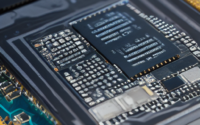How Remote Patient Monitoring is Transforming Healthcare
How Remote Patient Monitoring is Transforming Healthcare
Introduction to Remote Patient Monitoring:
Remote patient monitoring (RPM) is a technology that allows healthcare providers to monitor patients outside of conventional clinical settings. This innovative approach uses various devices, such as wearable sensors, mobile apps, and other monitoring tools, to collect patient data and transmit it securely to healthcare professionals. RPM enables continuous tracking of vital signs, symptoms, and other health metrics in real-time, providing healthcare teams with actionable insights to deliver timely interventions and personalized care.
Benefits of Remote Patient Monitoring:
The adoption of remote patient monitoring has brought significant benefits to patients, healthcare providers, and the overall healthcare system. Some key advantages of RPM include:
1. Improved Patient Outcomes: By tracking patients’ health data continuously, healthcare providers can detect early signs of deterioration and intervene promptly, leading to better health outcomes and reduced hospital readmissions.
2. Enhanced Patient Engagement: RPM empowers patients to take control of their health by providing real-time feedback on their progress and encouraging self-care management. This increased engagement often results in better adherence to treatment plans and improved overall health.
3. Cost-Effective Care Delivery: Remote monitoring can reduce healthcare costs by preventing unnecessary hospital visits, minimizing emergency room admissions, and optimizing resource utilization through remote consultations and interventions.
4. Access to Care Anytime, Anywhere: RPM enables healthcare providers to deliver care to patients in remote or underserved areas, expanding access to quality healthcare services regardless of geographical constraints.
5. Data-Driven Decision Making: The wealth of data collected through remote monitoring allows healthcare professionals to analyze trends, identify patterns, and make informed decisions to optimize patient care and outcomes.
Technologies Used in Remote Patient Monitoring:
Remote patient monitoring relies on a variety of technologies to facilitate continuous data collection and transmission. Some common technologies used in RPM include:
1. Wearable Sensors: These devices are worn by patients to track vital signs, activity levels, and other health parameters. Examples include smartwatches, fitness trackers, and health monitoring patches.
2. Mobile Applications: Mobile apps allow patients to input data, receive educational materials, and communicate with healthcare providers. These apps can also send alerts or notifications based on pre-set parameters to flag any abnormal readings.
3. Telehealth Platforms: These platforms enable virtual consultations between patients and healthcare providers, allowing for remote diagnosis, monitoring, and treatment planning.
4. Remote Monitoring Devices: These devices, such as blood pressure monitors, glucometers, and weight scales, collect specific health data and transmit it securely to healthcare teams for review and analysis.
5. Data Analytics Tools: Advanced analytics tools help healthcare professionals interpret the vast amounts of patient data collected through remote monitoring, allowing for predictive modeling, risk stratification, and personalized care planning.
Challenges and Considerations in Remote Patient Monitoring:
While remote patient monitoring offers numerous benefits, there are also challenges and considerations that need to be addressed to optimize its effectiveness. Some common challenges include:
1. Data Security and Privacy Concerns: Ensuring the confidentiality and security of patient data transmitted through remote monitoring devices is crucial to maintaining trust and compliance with healthcare regulations.
2. Integration with Existing Systems: Remote monitoring technologies need to seamlessly integrate with electronic health records (EHRs) and other healthcare IT systems to ensure continuity of care and facilitate data sharing among providers.
3. Patient Adoption and Engagement: Encouraging patients to actively participate in remote monitoring programs and ensuring their sustained engagement can be challenging. Education, training, and ongoing support are essential to promote patient compliance and empowerment.
4. Reimbursement and Regulatory Policies: The evolving landscape of reimbursement policies and regulations around telehealth and remote monitoring can impact the scalability and sustainability of RPM initiatives. Healthcare organizations need to navigate these complexities to maximize the benefits of remote patient monitoring.
Future Trends in Remote Patient Monitoring:
The future of remote patient monitoring is promising, with ongoing advancements in technology, data analytics, and healthcare delivery models. Some key trends shaping the future of RPM include:
1. Artificial Intelligence and Machine Learning: AI-powered algorithms are being increasingly utilized to analyze vast amounts of patient data collected through remote monitoring, enabling predictive analytics, decision support, and personalized interventions.
2. Remote Chronic Disease Management: RPM is playing a critical role in managing chronic conditions, such as diabetes, hypertension, and heart disease, by providing continuous monitoring, early intervention, and improved self-management tools for patients.
3. Virtual Care Integration: Remote monitoring is becoming more seamlessly integrated into virtual care platforms, allowing for comprehensive remote patient care, from monitoring to diagnostics to treatment, all in a virtual environment.
4. Expansion of Remote Monitoring Services: The demand for remote patient monitoring services is expected to grow, driven by the need for convenient, accessible healthcare options, especially in light of the COVID-19 pandemic, which has accelerated the adoption of telehealth and remote monitoring solutions.

